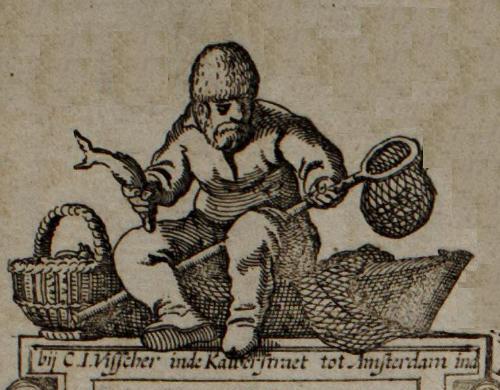Giochi dell'Oca e di percorso
(by Luigi Ciompi & Adrian Seville)
(by Luigi Ciompi & Adrian Seville)

|
Giochi dell'Oca e di percorso
(by Luigi Ciompi & Adrian Seville) |

|
| Torna alla ricerca giochi |
| Nome autore: | Visscher Claes Jansz |
| Nazionalità: | Olanda |
| Città: | Amsterdam |
 |
Visscher Claes Jansz (Amsterdam, 1586 - 1652) Biografia Claes o Nicolas Janszoon Visscher, detto anche Nicolaum Johannis Pescatorem (Amsterdam, 1586 – Amsterdam, 19 giugno 1652), è stato un editore, incisore, disegnatore e cartografo olandese del secolo d'oro. Figlio di Jan Claesz Visscher, un incisore ed editore di Amsterdam, padre di Nicolaes e nonno di Nicolaes II, fu attivo nella sua città natale dal 1601 fino al 1652. Il 9 ottobre 1608 sposò Neeltje Florisdr. Nel 1605 lavorò come incisore per l'editore di Amsterdam Willem Jansz. Blaeu, realizzando tra l'altro alcune vedute dei più importanti monumenti di Amsterdam, e per Theodoor Galle. Queste vedute di Amsterdam furono, in seguito, inserite dal Blaeu nella prima edizione in olandese del libro di Lodovico Guicciardini “Descrittione di tutti i Paesi Bassi”, libro che descrisse per la prima volta i Paesi Bassi, sia da un punto di vista geografico che economico e culturale. Molto presto però, Visscher iniziò a pubblicare stampe di propria fattura, caratterizzate dal logo detto La firma del Pescatore, riferimento al suo nome, sia da artisti olandesi contemporanei che non. Immagazzinò, inoltre, stampe, acquisendo su larga scala lastre di rame da altri editori e stampatori, non solo prodotte da artisti viventi, ma anche vecchie tavole da Maarten van Heemskerck e altri noti pittori, prodotte da Hieronymus Cock e dai suoi successori. Contribuì, in questo modo, a costituire una delle più importanti case editrici dell'epoca. Rappresentò soggetti religiosi, paesaggi, in particolare invernali, e architetture, e realizzò stampe di devozione. Realizzò stampe da disegni di artisti come David Vinckboons e mappe. Nonostante la più importante pubblicazione dell'epoca, la Bibbia, nella versione autorizzata nei Paesi Bassi, fosse senza illustrazioni, Visscher, come pure altri editori dell'epoca, realizzarono stampe, che, inizialmente separate dal testo religioso, vi furono in seguito incorporate. Collaborò con Pieter Hendricksz Schut a partire dal 1635. Subì la sua influenza Salom Italia. Biography Claes Janszoon Visscher (1587 - 19 June 1652) was a Dutch Golden Age draughtsman, engraver, mapmaker and publisher. Visscher, who was born and died in Amsterdam, was also known as Nicolas Joannes Piscator or Nicolas Joannis Visscher II, after his father who lived ca. 1550-1612. He learned the art of etching and printing from his father, and helped grow the family printing and mapmaking business to one of the largest in his time. It was a family business; Nicolaes Visscher I (1618-1679), and Nicolaes Visscher II (1649-1702) were also mapmakers in Amsterdam on the Kalverstraat. The times were with the Visschers for other reasons; due to the Protestant reformation, the older bibles with their "Roman Catholic" illustrations were seen as outdated and apocryphal, but to liven up the new Protestant bibles for the less well-read clergy, the Visschers produced illustrated maps and even landscapes of the places in the bible. This became a very successful family business, with collaboration with many respected draughtsmen of the day. A new translation of the bible was underway in the Netherlands, and until then, the new German translation done by Johannes Piscator, published in 1602-1604, was translated into Dutch. Though probably not a relative, his bible translation was accepted by the Dutch Staten-General in 1602, which only lent more publicity and authenticity to the "Fisher" name. The trademark of the Visschers was a fisherman, after their name (thus the Latin nickname Piscator). A small fisherman would be strategically placed somewhere near water. If the subject was a landscape without a stream or pond, then often a figure walking with a fishing rod can be seen. Their map plates were reused for a century by other printers who unknowingly copied the entire plates, including the tell-tale fishermen. Observant scholars are thus able to trace the provenance of bibles, maps, and landscapes from these signs. Aside from bibles, Claes Visscher II primarily etched and published landscapes, portraits and maps. He etched over 200 plates and his maps included elaborate original borders. Visscher died in 1652. He was a publisher of prints by Esaias van de Velde, and David Vinckboons, and was a big influence on Roelant Roghman and on his sister Geertruyd. (Wikipedia) |
Vai alla ricerca giochi Vai all'elenco autori